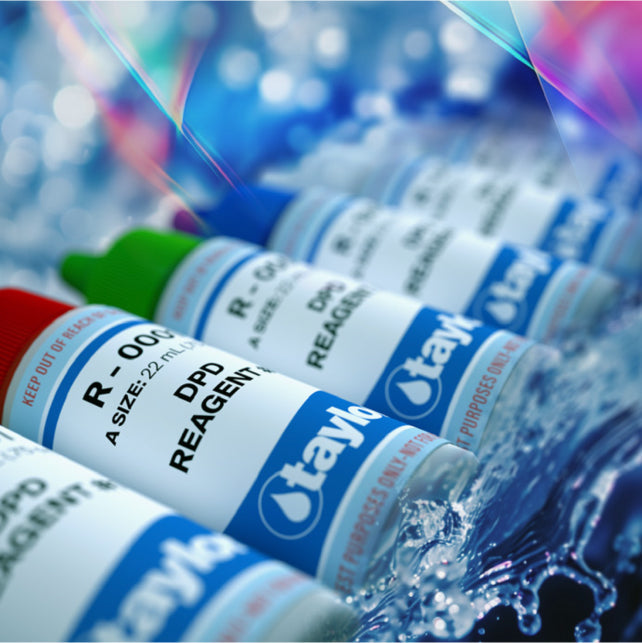Test Kit Demo
SKU:
Regular price
$38.66
Regular price
When accuracy, speed, and reliability are crucial to your operations, you can depend on the performance of Taylor’s water-testing instruments. Having the right tools for the job can make all the difference in the world, especially when it comes to monitoring water quality.
Couldn't load pickup availability
Collapsible content
| Analyte | Description | Method/Chemistry | Standard/Equivalance |
|---|---|---|---|
| Chlorine, Total | Total chlorine is the sum of free chlorine and combined chlorine, which includes chlorine that has already reacted with contaminants. This test accurately quantifies both forms to provide a comprehensive evaluation of chlorine presence in the water. | Proprietary | 0, 0.5, 1, 2, 5, 10 ppm chlorine (Cl₂) |
| Hardness, Total | Essential for balanced water and long-lasting equipment performance, this reagent measures the amount of calcium and magnesium in the water. | Proprietary | 0, 100, 200, 400, 800 ppm total hardness as CaCO₃ |
| Cyanuric Acid | Sunlight can strip chlorine of its effectiveness. Monitor chlorine stabilizer levels with Taylor Cyanuric Acid tests for optimal sanitization. | Proprietary | 0, 40, 70, 100, 150, 300 ppm CYA |
Document ID
V5_Taylor_Brand_Refresh
File Size
6.99 MB
File Type
Document ID
V2_taylor_guidelines
File Size
6.99 MB
File Type




